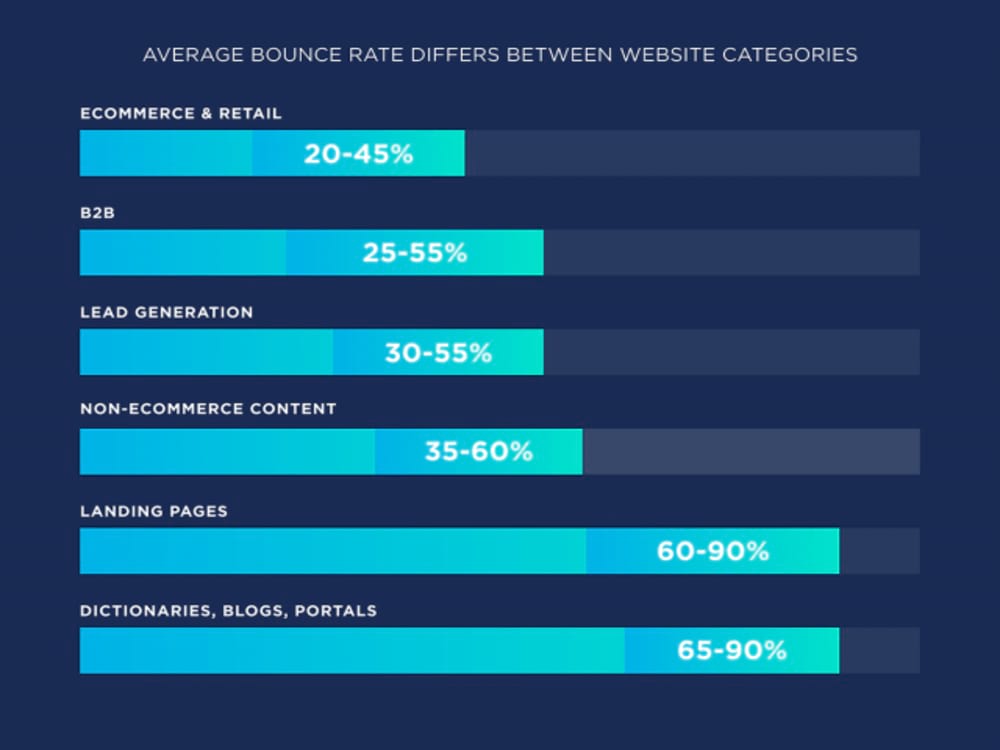When it comes to email outreach, it’s all too easy to get caught up in vanity metrics. If you send out an email and get a high open rate, it might feel like the email was a success, but in reality, it’s the click rate that is a measure of a successful email campaign.
When you’re spending marketing dollars on email campaigns, the last thing you want is thousands of eyeballs on your content with no real engagement in your product or service. It’s a costly mistake even large brands have made in the quest to create successful email marketing campaigns.
That said, open rate metrics have their place in email marketing and can give you some valuable insights into your audience’s likes and needs.
So what metrics should you be measuring, and how can they help you boost engagement? This post will give you all you need to know to make the most of your email marketing campaigns.
What you need to know about click-through rate
What is click through rate (CTR)?
Your click-through rate is the percentage of people who click on a link in an email. A higher click-through rate means higher customer engagement. No matter how many people open the email, if they’re not clicking on links, they’re not converting into qualified leads.
What Is a good CTR?
A good click-hrough rate averages around 2-3%. Although you might see higher rates if the campaign is well-optimized or operating in a niche sector.
Why does CTR matter?
Most top marketers focus on CTR because it helps businesses understand how customers are interacting with ads and what conversions are being made.
How to measure click-through rate

Don’t let the jargon confuse you. Measuring your click through rate is extremely easy. You can calculate the CTR of an email marketing campaign using the following formula:
The number of people who opened email divided by the emails delivered times one hundred equals the= CTR.
Ways to Improve Your Click-Through Rate
If you find your CTR is too low, there are some simple strategies to help boost it. CTR can be improved in several ways depending on the nature of the campaign. The following is an overview of some steps that can be used as a guide to ensure your CTR is the best it can be:
- Use the customer’s name in the email.
- Personalize the email message depending on the target demographic.
- Suggest other points of interest targeted at your demographic.
- Allow potential customers and clients to choose the product or service they are interested in.
These steps are merely an overview of some options available when attempting to increase your CTR, and there may be others depending on the goals of the email campaign.
What you need to know about open rates
Email bounce rates explained

A bounce rate refers to an email that couldn’t be forwarded to the recipient’s email address. In the world of email marketing, you’ll hear the terms “soft bounce” and “hard bounce.”
A “soft bounce” occurs when an email cannot be sent temporarily. This is usually a passingissue with the recipient’s email server or the user having a full inbox. When the email is resent later on, it usually goes through after a soft bounce.
A “hard bounce” refers to emails that sent to fake or deleted email contacts. Knowing when this occurs allows a business to update its contact list to avoid spending its marketing budget on useless emails.
Once you’ve established which emails are bouncing and remove them, you will then have a higher delivery rate. Work to keep the bounce rate low by consistenly deleting bad emails.If you find your bounce rate is high, you can carry out some email validation to ensure the details held are accurate.
What is open rate?

The open rate shows how many emails were opened following a campaign. If you’re new to email marketing, this metric can be a good place to start because it tells you how many of your subscribers are interacting with your content, as well as those who are not.
Knowing what percentage of emails are being opened not only ensures there are fewer bounces, but will also raise your average click-through rate over time.
What is a good open rate?
In a perfect world, your open rate would be 100%. Of course, this doesn’t happen in real life. Like the click-through rate (CTR), your goals will vary depending on the industry and marketing campaign, but those looking for a successful reach should be aiming for a 15 to 25% open rate.
How to measure open rate and click rate
The open rate is also known as the click rate. But don’t get this confused with the click-through rate (CTR). The click rate refers to the percentage of people that clicked on the email, whereas the CTR refers to when people click a link within the email itself.
When calculating the open rate of a campaign, use the following formula :
Emails read divided by emails delivered times one hundred equals the open rate
A similar formula can be used to calculate the Click Rate of a campaign:
Links clicked divided by emails read times a hundred equals the click rate.
Most email marketing platforms will record these metrics automatically so you won’t need to work them out by hand.
Click rate vs. open rate: which one should you track?

When is open rate more important?
So now the question is, which should you focus on: click rate or open rate?The fact is every campaign will have its own requirements, so what works for one email campaign will not necessarily work for another.
Should you track both?
Although there can be instances when the Click Rate is more important than the Open Rate, it is advisable to treat all metrics the same. However, there can be times when the focus has to shift between the two.
When Is click rate more important to track?
If you want to make sure your customers are finding your emails appealing and relatable, click rate is best.
A low Click Rate often means those receiving the email are not interested in the content you’re sending. Monitoring the Click Rate can ensure recipients are being matched with engaging and relative material.
When is open rate more important?
If your email campaign isn’t as successful as you’d hoped, you might find your emails are simply being ignored. This could mean you need to update the information, or a marketing refresh may be needed. Keeping tabs on the open rate is an excellent way of garnering which recipients are the most responsive, allowing you to make changes if needed.
What is the click to open rate (CTOR)?
One of the most commonly overlooked metrics is the click to open rate (CTOR). CTOR is a metric that allows businesses to establish the relevance of content. It can be calculated using the number of clicks an email has received, divided by the number of unique opens. Click to open rate metric should be used in alignment with other metrics, not on its own.At some point, all metrics will impact the overall email marketing campaign, and the impact could be detrimental if any of the metrics we’ve talked about are ignored.
Email marketing best practices
Tracking your CTR, open rate, and click rate is a major part of building successful email campaigns, but there are also some other email best practices that will help maximise the success of each campaign:
- Do not purchase contact lists, as this can lead to a low Open Rate and CTR.
- Don’t use more than three typefaces in your emails.
- Personalize the greeting on all email communication.
- A/B test different email marketing campaigns to establish what call to action works in real-time.
- Update your entire contact list regularly to decrease bounce rate.
- Write content in short, easy-to-read paragraphs with one or two sentences.
- Keep your online content as engaging as the email itself.
- Ensure the action buttons are prominently shown.
- Determine a frequency for your email campaigns – every day could be too much, whereas once a month could fail to gain traction.
Finally, when you’re optimizing your email campaigns, always set benchmarks. No matter how good your email campaign, you’ll never get a 100% CTR or open rate, so it’s important to set realistic benchmarks to aim for.
Email marketing benchmarks
The following is an example of some of the email insights seen in different sectors recently:
| Industry | Open Rate | Average Click Rate |
| Agriculture and Food | 22.71% | 2.91% |
| Arts and Artists | 23.31% | 2.94% |
| Beauty and Personal | 16.65% | 1.92% |
| Computers | 19.29% | 2.08% |
| Construction | 21.77% | 2.26% |
| Entertainment | 23.42% | 2.36% |
| Marketing | 17.38% | 2.04% |
| Media and Publishing | 22.15% | 4.62% |
| Photo and Video | 23.24% | 3.23% |
The email marketing benchmarks listed can change from year to year, so review these benchmarks regularly to check on industry trends.
Final thoughts
There is a lot to consider when email marketing, but taking the time to review metrics and ensure your email subscription list is active will ensure that future email marketing campaigns are a success. If you keep your mind onf your overall goal creating engaging content your audience wants to read,you’ll soon find that your metrics improve as a side effect. If you’re looking for help with your email outreach marketing, contact us today for a demonstration of our B2B lead generation techniques.

